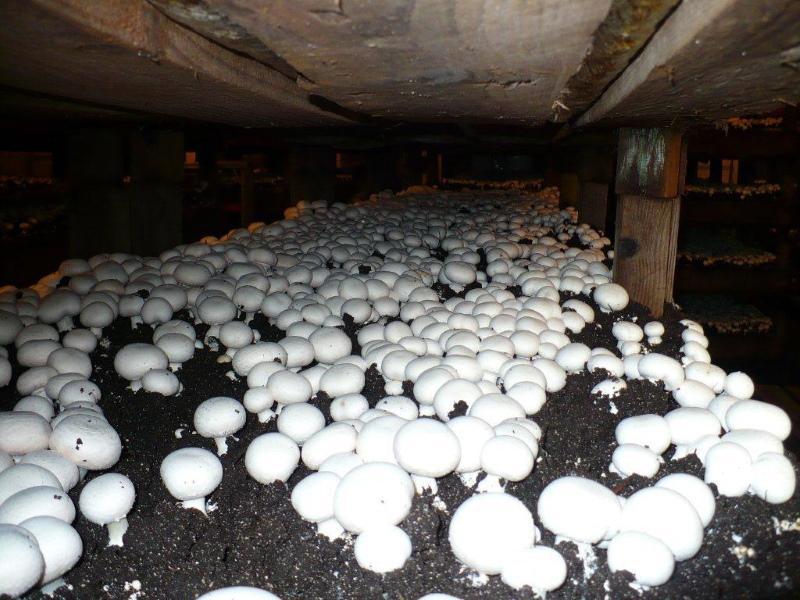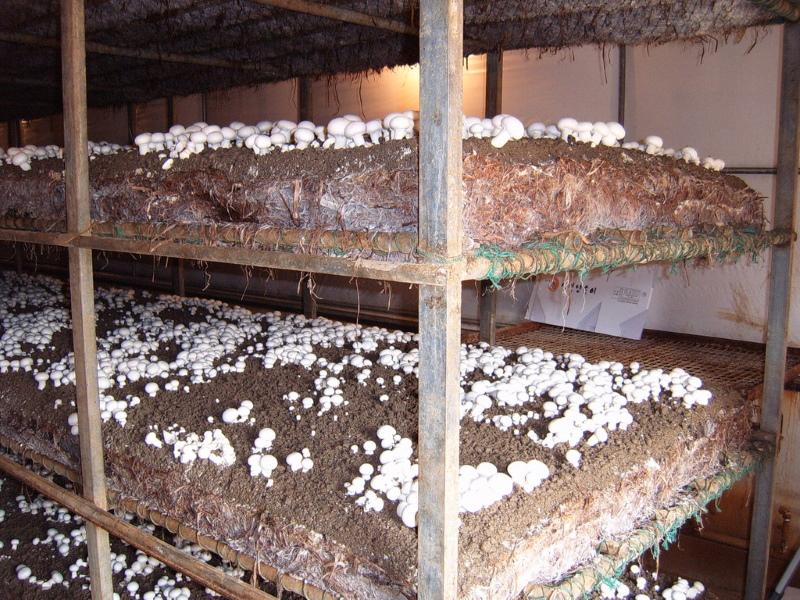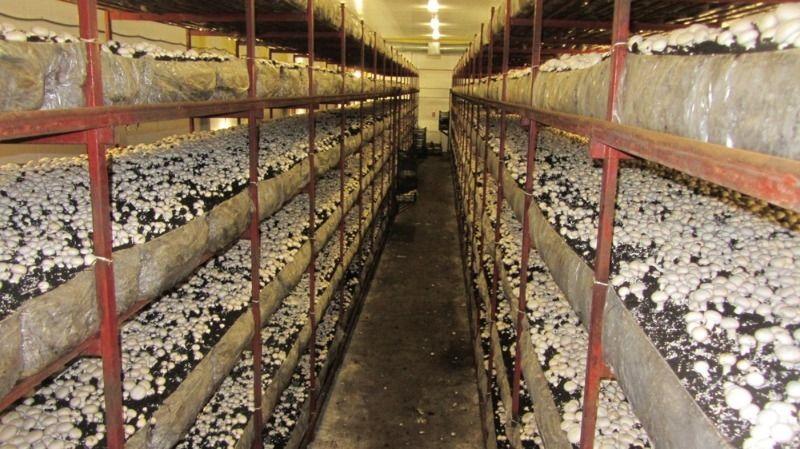Everything you need to know about how to grow champignons at home
 Almost everyone loves mushrooms, but if it is not always possible to get forest mushrooms and everyone can, then with mushrooms there are no such problems. They are so ubiquitous that they can even grow in your home. And many amateurs use this, because there is nothing particularly complicated in how to grow mushrooms at home, there is. The main thing is to purchase high-quality planting material (mycelium) and create comfortable conditions for its growth. And that's it, the mushrooms will literally grow like after the rain. Enough for yourself, and even for sale, because this is a very profitable business.
Almost everyone loves mushrooms, but if it is not always possible to get forest mushrooms and everyone can, then with mushrooms there are no such problems. They are so ubiquitous that they can even grow in your home. And many amateurs use this, because there is nothing particularly complicated in how to grow mushrooms at home, there is. The main thing is to purchase high-quality planting material (mycelium) and create comfortable conditions for its growth. And that's it, the mushrooms will literally grow like after the rain. Enough for yourself, and even for sale, because this is a very profitable business.
How to grow champignon mushrooms at home

- choice of premises;
- preparation of a substrate for champignons (it must be special, mushrooms do not grow in ordinary soil);
- acquisition and planting of mycelium.
Where can you grow mushrooms
 Although mushrooms can grow outdoors, indoors it is better to opt for indoor spaces at home. It is easier to maintain the necessary conditions in them, moreover, then the cultivation can be carried out all year round, regardless of weather conditions. This can be a basement, shed, cellar, greenhouse. Some craftsmen even manage to plant champignons in apartments, on glazed balconies.
Although mushrooms can grow outdoors, indoors it is better to opt for indoor spaces at home. It is easier to maintain the necessary conditions in them, moreover, then the cultivation can be carried out all year round, regardless of weather conditions. This can be a basement, shed, cellar, greenhouse. Some craftsmen even manage to plant champignons in apartments, on glazed balconies.
Mushrooms have no requirements for lighting, but there are other nuances. The room must have:
- minimum area 3 sq. m .;
- the ability to ventilate and control temperature and humidity;
- concrete floor that can be treated with disinfectants.
Until the germination of the mycelium in the room, maintain a temperature of at least 25 ° C heat and humidity from 75%. Then the temperature is lowered to plus 15 ° C.
How to make mushroom substrate
 Mushrooms grow on a special compost, which is based on horse manure and straw. He prepares as follows:
Mushrooms grow on a special compost, which is based on horse manure and straw. He prepares as follows:
- In a covered room, where contact of the substrate with the ground and rain is excluded, straw is soaked in the amount of 100 kg. Better to use wheat or rye. Three days are enough for it to start “burning”.
- Wet straw is laid out in a pile in layers, alternating with manure. It will need 80 kg. In addition, superphosphate is added to the straw and urea... Their total amount is 2 kg for the indicated weight of straw. In total, there should be at least 3 layers of straw and the same amount of manure with a thickness of 30 cm.
- The laid pile is watered twice a day so that it does not dry out. After 7 days, it is shaken with a pitchfork. Stirring is repeated 4 more times every 4 days.
- During the last tedding, 5 kg of chalk and 8 kg of gypsum are added to the substrate.
The substrate matures up to 25 days and in total it turns out a little more than 200 kg. Readiness can be determined by the disappearance of the characteristic ammonia odor. In addition, the soil mixture becomes springy, loose, and does not stick.
Horse manure can be replaced with chicken manure, but then you do not need to add urea.
Where and what mycelium to buy
 The mycelium can be obtained for free if it is possible to collect it in the wild places where mushrooms grow. They remove it together with the soil, choosing areas covered with a blue mesh. This is a young mycelium, and yellow, old, do not take. There is also another way - to remove spores from purchased champignons and sow them on oat agar to grow mycelium.
The mycelium can be obtained for free if it is possible to collect it in the wild places where mushrooms grow. They remove it together with the soil, choosing areas covered with a blue mesh. This is a young mycelium, and yellow, old, do not take. There is also another way - to remove spores from purchased champignons and sow them on oat agar to grow mycelium.
But the most reliable option is to buy a ready-made mycelium. Then you can be sure that it will be sterile, without harmful fungi that can be brought in from the forest.
There are three types of champignons on sale, differing in the color of their hats. The most productive are cream and porcini mushrooms. Brown mushrooms are inferior to them in this, but they are more resistant to adverse conditions, for example, temperature fluctuations.
Usually you can find mycelium on sale in two forms:
- grain (in bags, stored in the refrigerator for 6 months);
- compost (in glass containers, can be stored up to 12 months).
A larger crop can be harvested from grain mycelium. But the compost box can withstand temperature changes better.